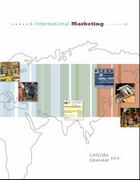Question
Question 1 A life insurance company issues a with profit whole life assurance policy to a life aged 55 exact. The sum assured is 75,000
Question 1
A life insurance company issues a with profit whole life assurance policy to a life aged 55 exact.
The sum assured is 75,000 together with any attaching bonuses and is payable immediately on
death. Level premiums are payable monthly in advance ceasing on the policyholder's death or on
reaching age 85 if earlier.
Simple annual bonuses are added at the end of each policy year (ie the death benefit does not
include any bonus relating to the policy year of death).
The company calculates the premium on the following basis:
Mortality AM92 Select
Interest 4% per annum
Expenses
Initial 275
Renewal 65 at the start of the second and subsequent policy years and payable until
death
Claim 200 on death
Commission
Initial 75% of the total premium payable in the first policy year
Renewal 2.5% of the second and subsequent monthly premiums
Bonuses Simple bonus of 2.0% of basic sum assured per annum
(i) Calculate the monthly premium for this policy.
(ii) Calculate the gross prospective policy value at the end of the 30th policy year given that
the total actual past bonus additions to the policy have followed the assumptions stated
in the premium basis above (including the bonus just vested).
Policy value basis:
Mortality AM92 Ultimate
Interest 4% per annum
Expenses
Renewal 80 at the start of each policy year and payable until death
Claim 250 on death
Commission
Renewal 2.5% of the monthly premiums
Bonuses Simple bonus of 2.5% of basic sum assured per ann

Step by Step Solution
There are 3 Steps involved in it
Step: 1

Get Instant Access to Expert-Tailored Solutions
See step-by-step solutions with expert insights and AI powered tools for academic success
Step: 2

Step: 3

Ace Your Homework with AI
Get the answers you need in no time with our AI-driven, step-by-step assistance
Get Started


